Stone, minerals and semiprecious of the world stone
Phosphate: Apatite -->rus
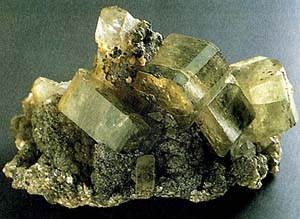 Diagnostic cart.
Diagnostic cart.
On a photo: crystals of greenish-yellow apatite are in a gangue (Panashkeyra, Portugal, EU). Down. Crystals of prismatic look are in a maternal mountain rock (Durango, Mexico).
Ca5 (PO4)3 (F, Cl, OH)
Crystal structure hexagonal
Hardness on the Mohs scale 5
Specific unit weight mass 3,16-3,22
Cleavage bad
Fracture, break padman
Colors colourless, polycoloured (multicoloured)
Colors in powder triturate white
Glance (glitter, glare) glassy

Apatite (in Greece "changeable") is a phosphate of calcium. Glance (glitter, glare) glassy to fat. Transparent, transparent or opaque. Colors: yellow, gold, green, blue, brown, violet; it is colourless. A line is white to rather yellow-grey. Fracture, break padman. Fragile. Cleavage noperfect absolute. Appears in magmatic and metamorphic rocks. Crystals are rich in verges. Their ribs are usually smoothed out. Widely widespread. Collection standards are mainly in pegmatites and alpine vein, lode, mines. Apatite along with фосфоритом, being thin mixture of apatite with other phosphates, serves as raw material for the receipt preparation of phosphoric acid.
Apatite is a pale green to purple mineral, found in igneous rocks and metamorphosed limestones. It is used in the manufacture of phosphorus, phosphates, and fertilizers. Composition: calcium fluorophosphate or calcium chlorophosphate. General Chemical formula: Ca5(PO4,CO3)3(F,OH,Cl). Crystal structure: hexagonal Etymology: from German Apatit, from Greek apate deceit; from its misleading similarity to other minerals.
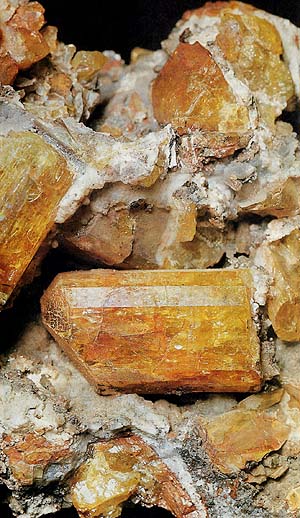 The crystals of apatite are not too hard, have glassy brilliance and can be painted in any color. Blue, green and violet valued on jeweller business. Cleavage very poorly expressed along bottom base; a fracture is a padman, fragility is enhanceable. The habitus (look) of crystals is hexagonal prismatic. Prisms end with two pyramids or verge of bottom base. This last, strongly overgrowing, can give a crystal a plate tablet lamellar type.
The crystals of apatite are not too hard, have glassy brilliance and can be painted in any color. Blue, green and violet valued on jeweller business. Cleavage very poorly expressed along bottom base; a fracture is a padman, fragility is enhanceable. The habitus (look) of crystals is hexagonal prismatic. Prisms end with two pyramids or verge of bottom base. This last, strongly overgrowing, can give a crystal a plate tablet lamellar type.
Chemical composition (chemistry, compound) is maintenance (in %): CaO - 53-56; P20s-41; F - to 3,8 (fluorapatite); Cl - to 6,8 (chlorapatite); the admixtures of manganese are often marked, iron, strontium, aluminium, thorium, rare earths, carbonate group - S02 (carbonate-Apatite) and other of Crystal structure - hexagonal, hexagonal-dipyramid, bipyramid type of symmetry. Often be found as prismatic crystals and needles, shortcolumnar, basaltiform is rarer marked or plate tablet lamellar crystals. Main simple forms:(1010), (1120), (0001), (10l2}, {1011}, (1121}, (2021), (3142} and other.
Apatite - it the phosphate of calcium, crystallizable in hexagonal Crystal structure, usually be found as continuous grainy the masses. Rarer growings in meet in a rock separate his prismatic crystals. Opaque crystals can arrive at enormous sizes here. For example, in Canada were found out the prisms of apatite weighing more than 200 kilograms and long about 2 meters! Much rarer there are shallow transparent crystals which present a value as raw material for jeweller works.
Apatity of sedimentary origin can have a form of concretions or massive accumulations of grainy material, dense or earthy additions. A cryptocrystalline amorphous variety is named kollofane.
Diagnostic indication.
Apatite in a number of cases it is possible to entangle with other semiprecious stone. Most it reminds Tourmaline due to the rich gamut of colouring. In the cut kind nonspecialist can entangle them with more hard beryl, diopside or tourmalines.
Origin provenance genesis.
Apatite - widespread accessory mineral in many igneous and metamorphic rocks in which it is crystallized already on the initial stages of thermosetting of magma. The crystals of large size have a pegmatitic origin usually. Microcrystalline Apatite is closely related to siltages abundant organogenetic tailings were saved in which (skeletons, separate stone and other).
Deposit minefield mine field occurrence subsoil.
Apatite of good jeweller value take a place from Burma, Sri Lanka (famous overflowing different flowers stone) and Brazil. Other considerable deposits are in Mexico, Canada and Germany. In the CIS found out jeweller Apatite on the Kola peninsula and in Transbaikalia (Zabaykale, Russia, CIS) - dark blue, in East Transbaikalia (Zabaykale) and on Pamire - rose, on Aldane - green. Jeweller Apatite meet in the deposits of different countries.
Use, practical application, deployment.
As Apatite - enough widespread mineral, containing phosphorus, it has a large industrial value. In some places Apatite forms the large accumulations of sedimentary organogenic, named phosphorite. They are basic mineral raw material for the production of phosphoric fertilizers.
Use is on jeweller business.
For an apatite, cutting is most widely used fasings, as Tondo or oval, rarer step. Iridescent apatite, vice versa, cut facet as cabochon. In Smitson institute in Washington (USA) violet Apatite (very rare) is kept weighing in 100 grammes. The largest semiprecious stone of apatite in the world of the chlorine colouring (147 carats) takes a place from Kenya. Transparent beautifully painted apatite is used as jeweller stone, which requires an exact appeal because of enough low hardness. At treatment an apatite give the facet cutting, less transparent stone of cabochon. During authentication of apatite it is necessary to turn the special attention on low hardness and birefringence.
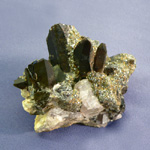
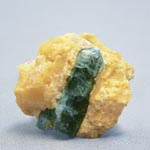
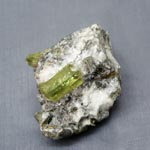
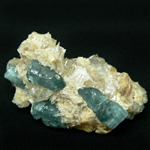
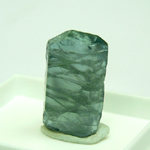
Phosphorus. V.A. Engelgardt: Without phosphorus there is not motion, because chemism of muscle reductions - it chemistry of phosphoric compounds wholly". Phosphorus enters in the complement of albumens, fats, nucleic acids, activates mental and physical activity, provides the organism of people energy. General maintenance of phosphorus in the organism of people makes about 500 g for men (heavier, anymore bodyweight) and 400 g for women.
The physiological consisting, necessities characterized an increase, of phosphorus (growth, pregnancy, suckling) is accompanied the proper strengthening of absorption. Negative balance is observed in age a chief 65 years, due to the loss of phosphorus with urine. Phosphorus in extracellular liquids is 1% from phosphorus of organism. In plasma found out greater part (70%) of phosphorus as component part of organic phosphotides. Useful faction in plasma is inorganic phosphorus, 10% which is related to the albumen, 5% make complexes with a calcium or magnesium, and greater part of inorganic phosphorus of plasma is presented two factions of orto-phosphate. Inorganic phosphorus is in an organism - actually, apatite (a phosphate is a calcium).
Found out phosphorus in all of cages of organism. Basic places, containing him, it is hydroxyapatite of bone and skeletal musculature (bones a people consist of hydroxyapatite which is difficult salt and participates in a proteometabolism). Phosphorus as salts and phosphoric acid is both in muscle and in bone tissues. It is instrumental in a skeletogeny, promotes resistance of teeth to the caries, needed for work of cns (brain is psychiatry), participates in a intracellular exchange.
Phosphorus as phosphates enters in the complement of nucleic acids and nucleotides (DNA, RNA), participates in the processes of encoding and storage of genetic information. Compounds of phosphorus take part in the major processes of exchange of energy. Adenosine triphosphoric acid (ATP) and phosphocreatine are the accumulators of energy, to their transformations thought and intellection, power life-support of organism, is related.
Signs of insufficiency. Insufficiency of phosphorus can be reason of the state of enhanceable anxiety, crabbiness, weakness, shaking, ostealgias, rachitis, parodontosis, amphodontosis, fatigue, unrhythmic breathing, numbness, sensitisation skin, changes in weight. Phosphorus is needed: at breaks, osteoporosis, caries, nervous break-downs.
At surplus of phosphorus in an organism the level of manganese and calcium goes down considerably, that can be instrumental in the origin of osteoporosis (breaks of bones). The surplus receipt preparation of phosphorus is provoked by development of urolithiasis (phosphates). The sources of food, containing a lot of albumen (meat, milk, eggs and cereal), have high maintenance of phosphorus. Phosphoric (bog - kimberlite) organic matter and nonorganic.
Dangerous "hazardous cargo", signs #4.1 
Flammable hard solid substance matters, self-reactive matters and solid desensitized explosives
Risk of fire. Flammable or combustible matters can catch a fire from sparks or flame. Can contain self-reactive matters, apt at exothermic decomposition in the case of heating, contact with other matters (such as: acids, connections of heavy metals or amines), to the friction or blow.
It can result in the selection of harmful or flammable gases or pair or spontaneous combustion. Capacities can burst at heating (dangerous, perilous - does not burn practically).
Risk of explosion of the desensitized explosives after the loss of desensitizer
Seven vertical red striaes on a white background, isometric, number of Dangerous "hazardous cargo", signs, black flame
Dangerous "hazardous cargo", signs #4.2 
Matters substances, apt at spontaneous combustion
Risk of fire as a result of spontaneous combustion in case if packing is damaged or the source of maintenance happened.
Can stormily react with water
White overhead half of rhombus, red - lower, isometric, number of Dangerous "hazardous cargo", signs, black flame
Dangerous "hazardous cargo", signs #4.3 

Matters substances, which select flammable gases at a contact with water
Risk of fire and explosion at a contact with water.
Gruz, which had scattered, it is necessary to cover and hold dry
Sine-blue rhombus, number of Dangerous "hazardous cargo", signs, black or white flame
